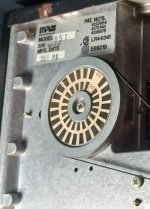shevett
Experienced Member
I was watching Adrian's Basement, and he used a tool that looks like it's helpful in aligning and tuning floppy drives. It set recording levels for the write head, speed checks, etc. Does anyone know what this tool is and/or has an image I can get? I have like 5 drives I'd like to get all tuned up and interchangeable, and while I can format/init on them, I'm not confident each can read the others' disks.

